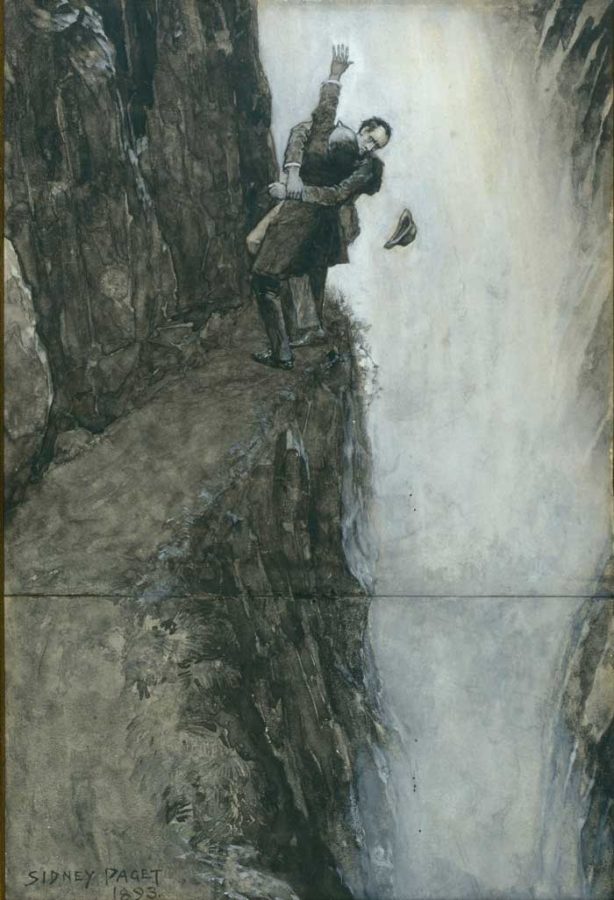Fans of Sir Arthur Conan Doyle’s great detective Sherlock Holmes know the criminal genius Professor James Moriarty. Best known for killing the famous sleuth when they both tumbled off a waterfall locked in mortal combat, the professor has since served as the primary antagonist of just about every “Sherlock Holmes” adaptation. Now he’s shoehorned into stories that originally didn’t have anything to do with him.
Yes, one of the most famous fictional villains in history was virtually made up out of whole cloth by centuries of fans and has little resemblance to the character that Sir Doyle actually created.
What most people don’t realize about the famous “The Adventure of the Final Problem” (two-century-old spoilers) is that it’s a misnomer: their final confrontation was their only confrontation, and Moriarty doesn’t even show up.
The story skips right over the promised battle of minds. It begins with Holmes informing his friend Dr. John Watson about “The Napoleon of Crime,” how Holmes has engaged this never-before-mentioned mastermind in an amazing clash of wits and how darn it, you just missed it, but it was epic.
The story is entirely composed of Holmes giving exposition to Watson, Holmes traveling the British countryside with Watson and Holmes giving even more exposition to Watson. Nothing else happens.
That’s right — the story that was meant to be the last Holmes story ever told involves the Great Detective doing no detective work whatsoever. You could be pardoned for thinking that Holmes made Moriarty up as an excuse to go farting around with his best buddy, seeing as how we only have his word that Moriarty exists at all.
Even the final confrontation happens off-screen. Watson shows up to see a note written by Holmes about his last stand against the mad genius, who apparently was polite enough to just wait there while Holmes wrote it.
The real reason behind the seemingly final episode in Holmes’ adventures was that Doyle was sick of writing about the guy and needed a plot device to get rid of him. Later Doyle caved to public protest and started writing more Holmes anyway — but no more Moriarty for Doyle.
However, Moriarty would not go gently into the night. Following adaptations heavily feature the professor, usually as the mastermind behind several different capers.
The “Sherlock Holmes” stage play, which started in 1899 and went on for over 30 years, had Moriarty cast as the main villain.
Steven Moffat’s modern-day adaptation, “Sherlock,” has Moriarty as the mastermind behind nearly every crime in the first two seasons.
The cartoon show “Sherlock Holmes in the 22nd Century,” which was every inch as crazy as it sounds, showcases Moriarty shoehorned into just about every single episode.
Two hundred years later, and Moriarty is now a masterful villain who clashes with Holmes many, many times in elaborate mental chess games, a far cry from the deus ex machina he originally was.
The idea of the World’s Greatest Detective clashing wits with the World’s Greatest Criminal Mind is a fascinating idea, and led to some great stories – the character portrayed in “Sherlock” is a blast to watch.
While the truth behind the myth disappoints, it is perhaps best to remember the character as we all want him to be, not the character he actually was. Maybe it’ll retroactively becomes canon.





